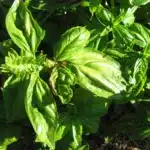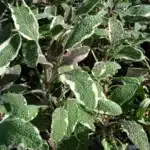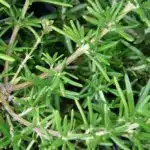Herbs: Cultivate Flavor and Wellness - Unlocking the Nutritional Power in Your Diet
Definition
The term “herbs” typically refers to small plants valued for their medicinal, culinary, aromatic, or savory qualities. These plants are often used in cooking, for flavoring and seasoning, as well as in traditional and alternative medicine for their potential health benefits.
These can be classified into different categories based on their uses
Culinary Herbs: These are used to add flavor to food. The greens are basil, thyme, rosemary, parsley, tulsi, lemongrass, etc,.
Medicinal Herbs: Certain are used in traditional medicine for their potential health benefits. Examples include echinacea, chamomile, and ginseng.
Aromatic Herbs: These are valued for their pleasant fragrance. Examples include lavender, mint, and cilantro.
Ornamental Herbs: Some are grown for their aesthetic appeal in gardens. Examples include lavender and ornamental sage.
Herbal Teas: Many are used to make herbal teas, which are popular for their soothing and aromatic qualities. Examples include chamomile tea and peppermint tea.
They are often cultivated in home gardens or commercially grown for various purposes. They can be used fresh, dried, or as essential oils. The use dates back centuries and is found in various cultural and culinary traditions worldwide.
Table of Contents




Where are they found?
Herbs – Where are they found
It is found all around the world, and their availability depends on factors such as climate, soil conditions, and regional ecosystems. Here are some general observations about where herbs are commonly found:
Mediterranean Region: Like rosemary, thyme, oregano, and basil are commonly associated with the Mediterranean climate and are widely used in Mediterranean cuisine. Countries such as Italy, Greece, and Spain are known for their rich use of these herbs.
Asia: Cilantro (coriander), ginger, lemongrass, and basil are prevalent in Asian cuisines. These thrive in the diverse climates of Asian countries and are integral to the region’s culinary traditions.
Middle East: Such as mint, parsley, and cilantro are commonly used in Middle Eastern cuisine. These are well-suited to the arid and semi-arid climates of the region.
North America: Natives like sage, mint, and oregano are found in North America. Additionally, indigenous peoples have traditionally used various native plants for culinary and medicinal purposes.
Europe: Besides the Mediterranean region, other parts of Europe also cultivate and use a variety of herbs. For example, dill and tarragon are popular in Eastern European cuisines.
Tropical Regions: Such as lemongrass, ginger, and cilantro are often found in tropical regions.
Home Gardens: Many people cultivate in their home gardens regardless of geographic location. This allows individuals to have easy access to fresh herbs for cooking or medicinal purposes.
It’s important to note that with global trade and transportation, people can now access a wide variety of these from different parts of the world, regardless of their local climate. Additionally, many herbs can be grown in a variety of climates with the right care and cultivation techniques.
Nutrients
Nutrients
Yes, They are often rich in nutrients and can contribute to a healthy diet. While the specific nutritional content varies among different herbs, many of them contain essential vitamins, minerals, and antioxidants. Here are some common nutrients found:
Vitamins: It can be a good source of vitamins, including vitamin A, vitamin C, vitamin K, and various B vitamins. For example, parsley is known for its high vitamin K content, while cilantro (coriander) is a good source of vitamin C.
Minerals: It may contain essential minerals such as calcium, iron, magnesium, and potassium. For instance, basil provides magnesium, and thyme contains iron.
Antioxidants: Many are rich in antioxidants, which help protect the body’s cells from damage caused by free radicals. Antioxidants play a role in reducing inflammation and preventing chronic diseases. Rosemary and oregano, for example, are known for their antioxidant properties.
Phytochemicals: It often contains various phytochemicals, which are natural compounds that may have health-promoting properties. These can include anti-inflammatory, antimicrobial, and anti-cancer effects. Garlic and turmeric are examples of herbs with beneficial phytochemicals.
Dietary Fiber: Some provide dietary fiber, which is important for digestive health. Cilantro, for instance, contains a small amount of fiber.
Essential Oils: Many contain essential oils, which contribute to their unique flavors and aromas. These oils may have antimicrobial properties and are sometimes used for their potential health benefits.
It’s important to note that while herbs can contribute valuable nutrients, they are typically consumed in small quantities, so their nutritional impact per serving may be modest compared to other food sources. Nevertheless, incorporating a variety of herbs into your diet can enhance the overall nutritional profile of your meals and contribute to a diverse range of flavors and health benefits.
